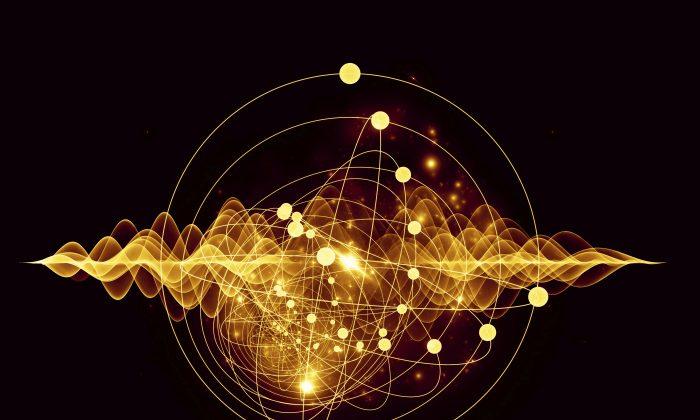The present framework of quantum mechanics has reached its limit, said Professor Emeritus Dr. William Tiller of Stanford University’s department of materials science, in a white paper published on his website last year. “Many of the outcomes from today’s experiments are requiring weirder and weirder explanations,” he wrote.
He discussed the concept within quantum mechanics that any substance can be expressed as either a particle or a wave. Tiller wrote: “The founding fathers of QM [quantum mechanics] should have taken the large step of creating and using a different reference frame for the waves than for the particles, however, they did not. They tried to squeeze it all into a spacetime-only reference frame and thus ended up in perpetual weirdness for QM physics.”
Tiller and his colleagues have created a duplex reference frame consisting of two subspaces.

A substance’s particle-nature functions in one subspace, called D-space, which is the spacetime where traditional scientific measurement instruments function. A substance’s wave-nature functions in the other subspace, R-space, which is usually invisible to traditional instruments.
If R-space is invisible, how does Tiller know it’s there? He said he has discovered a type of particle he calls a deltron that acts as a coupling substance between D-space and R-space. When the deltrons are active, and D-space and R-space are in a coupled state, he is able to use traditional measurement instruments to detect R-space.
According to Tiller, human intention is able to create this coupled state.
Quantum mechanics in its present framework cannot explain psychoenergetic phenomena, such as remote viewing, Tiller said. But his duplex reference frame can.
“Nature is always richer in untapped possibilities than we think it is,” he said. “We might reveal new levels of nature’s expression, which might look like new levels of ’magic' as interpreted by the old paradigm.”
Psychoenergetic phenomena linger on the fringe of science, but Tiller has been undeterred in his decades-long research into the power of human intention.
He told Epoch Times in an interview last year, “There are thousands of people over the last 150 years who have done such remarkable things that are put in the category of parapsychology, which orthodox science has wanted to sweep under the rug, because the results are not internally consistent with their results.”
He wrote in the white paper: “It is time to formulate a larger perspective or scientific reference frame for viewing nature that both accounts for all of the old data and also provides the possibility of quantitatively accounting for this new psychoenergetic data in an internally self-consistent way.”
Follow @TaraMacIsaac on Twitter, visit the Epoch Times Beyond Science page on Facebook, and subscribe to the Beyond Science newsletter to continue exploring ancient mysteries and the new frontiers of science!





